by Robin Untz and Claire Flood for Curating Community Digital Collections
Part I: Our Organization – The Lake Mills Aztalan Historical Society
by Robin Untz, President, Lake Mills Aztalan Historical Society
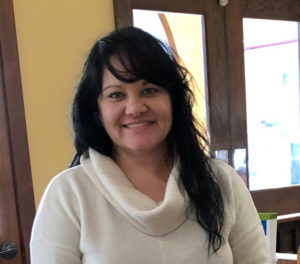
When the Lake Mills Aztalan Historical Society was established in 1941, its purpose was to preserve the town’s original brick church (1852) by transforming it into a local museum. At the time, the thought of a future beyond simply displaying the town’s historic artifacts hadn’t even crossed Society members’ minds, let alone a digital world where information is available at the click of a button.
The Lake Mills Aztalan Historical Society is dedicated to the preservation and education of local pioneer and ancient Native American history in our area. To date, it has accomplished this by sharing physical objects from community members, through the display of historic photos and documents, its research archives, and through preservation standards set for the town’s historic structures at the Society’s founding over 75 years ago. Many of these standards are outdated and obsolete and do not easily accommodate new historic content, especially collection development based on modern technology, such as digital content. So, not unlike the founding members of LMAHS, we are starting at “square one,” as we approach how to preserve the Society’s digital content.
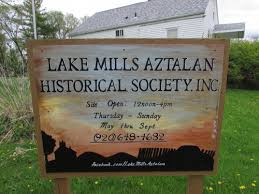
As a volunteer non-profit organization, we rely heavily on volunteers, donations, fundraising, and admissions revenue received during the museum’s season. It has been a challenge to manage the physical museum site and collections with limited resources. As we approach the task of preserving digital content, we not only have to establish policies on how to preserve that content but also think about how best to create and sustain these new collections. In addition to establishing staff and financial resources, it is vital that we build support from our community and board members by conveying how these digital collections can help secure the longevity of LMAHS by establishing our place and value within a modern society.
Our volunteer staff has dwindled substantially over the years, as community members’ lives become busier, interest in local history wanes or the long-term volunteers have passed away. When volunteers do have the time, most are retirement age and through no fault of their own, lack adequate computer experience to assist with digital collection development work without moderate training and supervision.
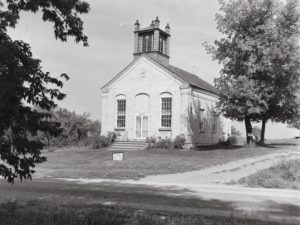
WI.dnr0419.bib.
As I came into the role of President of LMAHS, the Society was on the brink of having to make some difficult decisions about the future of the museum site. The museum was minimally functioning, operating costs were exceeding revenue, and active, productive volunteerism was nearly non-existent. Old administrative methods had fallen by the wayside as leadership changed. We lacked strong leadership and knowledge of the Society’s original mission was not adequately passed to staff or members.
The most pressing issue I noticed immediately was an enormous gap between the museum’s presence in the community and its relevance to community members’ daily lives. My immediate response was to administratively restructure the Society to prevent the museum site itself from closing before we had a chance to work on some of the challenges. This restructuring included setting regular monthly meetings, establishing money handling and financial policies, making some very tough decisions about how the museum site, itself, was run, encouraging the board and volunteers to be more active in the everyday functions of the museum, and organizing more activities and fundraising events. I then shifted my focus to re-establishing the museum as a resource for our community and for others researching history, genealogy, and more. This meant providing content in a more accessible (digital) way, which has been the biggest challenge in thinking about digital collection development and preservation at LMAHS.
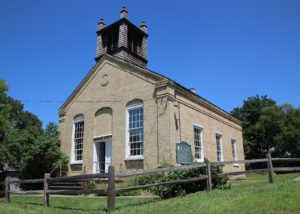
I am currently the only volunteer/member with enough knowledge to locate and scan requested photos or documents. When I first began, I quickly realized the demand from the public for digital content was much higher than initially anticipated. The idea of providing digital content had just not been explored. These opportunities to share our history, earn financial support, and build on our archives have been lost due to the widening gap of resources necessary to make them accessible in digital format.
The good news? We’ve been fortunate to partner with a small, local marketing business in Lake Mills to assist in creating digital images in exchange for use of these images by the marketing business to create and sell retail items. In addition, the marketing business provides us with the digitized images and we receive 30% of the sales of the retail items which helps support our Society. It is a temporary but valuable solution that allows increased access to our historical content in the manner the public desires. There are no set standards for digitization but we have plans to address this in the near future.
Now that we have established there is a clear and growing demand for digital content, we need to gain a better grasp on how we are going to meet the demand, and how to organize this content in a way we can handle as a small organization with very limited resources. We plan to implement, manage, build upon and sustain this digital archive so that we can re-establish our organization as a valuable resource of information for our community. Participating in Curating Community Digital Collections was the first step in educating ourselves in what we need to make to make this happen.
Part II: Our Current Project – Creating a Strong Foundation for Collection Development and Preservation
by Claire Flood, UW-Madison iSchool and CCDC practicum student
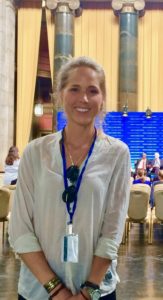
Crafting a digital preservation plan for LMAHS was priority #1 this summer. But, given the lack of structure, resources, and support for digitization work in the past, it seemed difficult and ill-advised to attempt to develop and present a fully-formed preservation plan without first addressing the more basic, foundational elements necessary to build a stable digital collection and digitization program.
For example, it was difficult to create a digital collection inventory (a key component of digital preservation planning) as there was no way of knowing how many digital images existed in the LMAHS’ collections as they have been saved in different locations throughout the years. How would we be able to describe something such as scope, without knowing the full extent of the collections?
Thus, we took a step back and assessed the situation from a broader perspective, knowing this type of basic collection development and digitization planning would be of greater benefit to LMAHS in the long run. My project shifted from creating a digital preservation policy to developing basic archives and collection development guidelines to share with the LMAHS Board and advocate for a stronger commitment to establishing stable analog and digital collections.
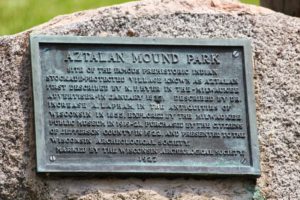
Given the Board’s limited exposure to and experience with archival methods, best practices, and archives- or digitization-related jargon, we decided to bring everyone “up to speed” and build support by crafting and presenting a set of simple, step-by-step guidelines that outlined requirements necessary to build and preserve a digital local history collection. Essentially, we want to advise the LMAHS Board, “This is what you are going to need in order to get from point A (no digital preservation) to point B (digital preservation).” We hope to gain the Board’s full support by emphasizing the benefit to the community and the investment in preserving their history – an insurance plan, so to speak, for their historical collections. If community members hope to have access to their family and community history, investment in digital collection development and preservation at LMAHS is imperative.
These guidelines are intended to provide a strong foundation for digital collection development and digitization work which, in turn, will inform future digital preservation plans at LMAHS. By sharing these guidelines, we hope to build awareness and impart a sense of urgency to help the LMAHS Board and community members better understand immediate challenges and possible solutions, and the resources necessary to implement them. Most importantly, we hope to help the Board and other community members understand the goals of the project and the benefits to both the community and LMAHS. Our goal is to craft and present a plan and guidelines to the Board at the end of August and do so in a way that is relatable to all Board members, regardless of their familiarity with this type of work. We’re excited to help LMAHS to modernize their collection development and digital curation efforts!
Visit Curating Community Digital Collections for more information about this project. This project is made possible by the Institute of Museum and Library Services, #RE-85-17-0127-17



You must be logged in to post a comment.